How Much Wind is Too Much For Paddle Boarding? Discover tips to conquer windy days and enjoy your time on the water despite challenging conditions!The weather is getting warmer, which means it’s time to start paddle boarding! Before you hit the water, you should know how wind can affect your paddle boarding experience. In this blog post, we’ll talk about how strong the wind should be before it’s too much for paddle boarding and share some tips to keep you safe when paddling in windy conditions.
How is Paddle Boarding Different from Canoeing or Kayaking in The Wind?
Paddle boarding is when you stand or kneel on a board and use a paddle to move through the water. Since you’re standing up, the wind can push you around more than if you were sitting in a kayak. Canoes are usually wider and offer more stability than paddleboards Canoes can be steered more easily than paddleboards, especially if you’re sitting down and using a double-bladed paddle. Kayaks, especially sit-inside types, are generally the most stable of the three because of their lower center of gravity and enclosed design.
Before you go paddleboarding, it’s important to understand how the wind can impact your trip. In strong winds, you might get pused off course or even fall into the water because of the waves. So, always check the weather and water conditions before you go.
How Much Wind is Too Much for Paddle Boarding?
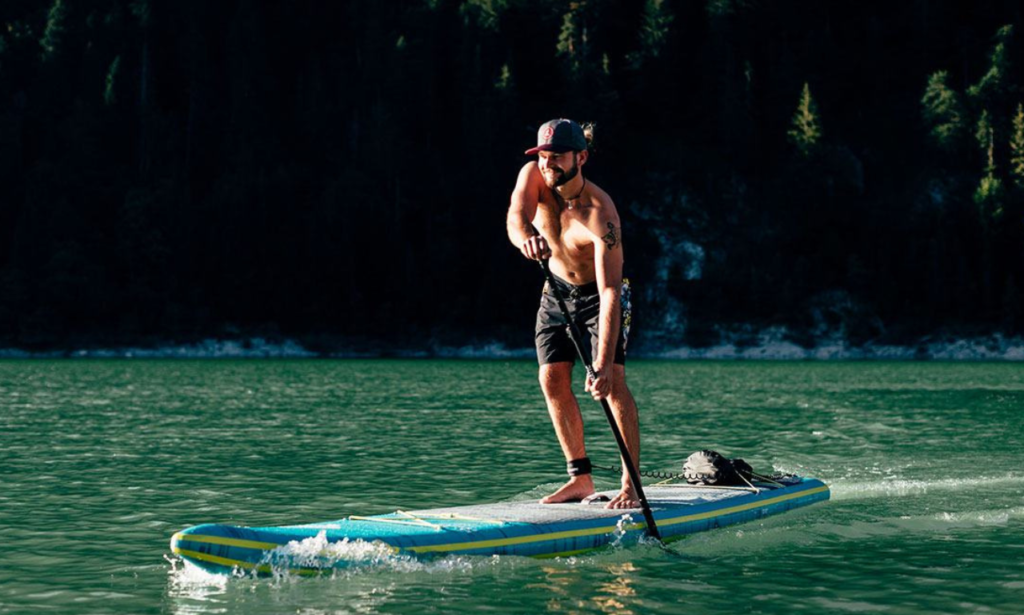
How much wind is too much for paddleboarding depends on your skill level. Beginners should avoid strong winds and rough water. Experienced paddlers can handle more wind, but they should still check the weather and water conditions before going out.It’s best to avoid winds stronger than 10-15 mph (16-24 km/h)
I don’t enjoy paddleboarding when the wind is over 15 mph. At this speed, white caps start to form on the water, and it becomes really hard to move forward against the wind. A more experienced paddler might handle it better, but you’ll learn your own limit for windy conditions after some practice.
A beginner paddleboarder should choose days when the wind is 10 mph or less. This will give you calmer water and a wind that’s easier to paddle against. For your first time on a stand-up paddleboard, winds of 5 mph or less are even better.
If you’re into downwinding, you might want stronger winds for bigger waves and more surfing fun.
How to Tell How Strong The Wind is Blowing?
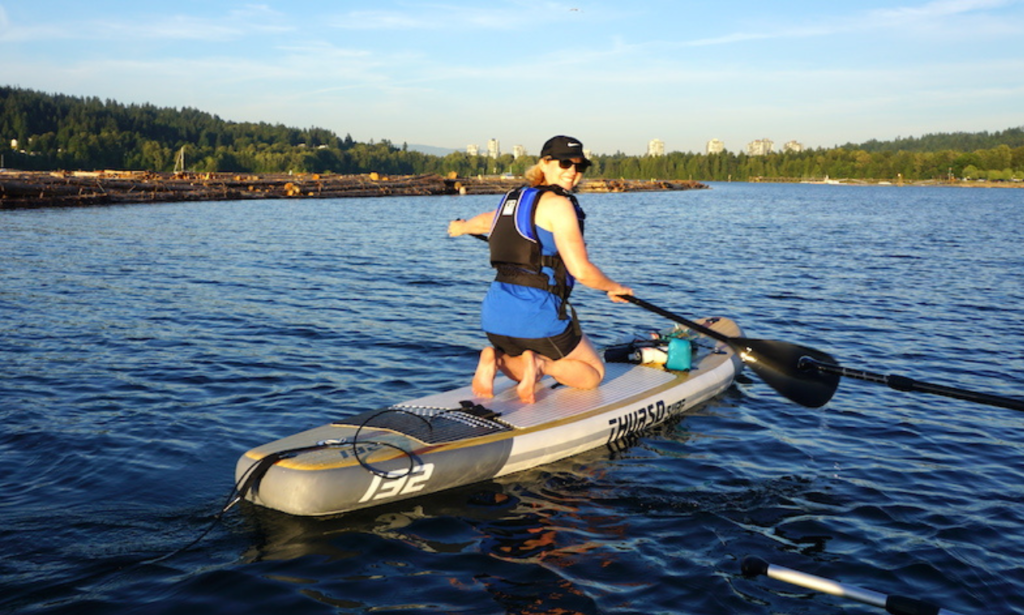
You can gauge the wind strength by observing the water. The wind might be blocked where you’re standing on the shore, so it’s wise to check the water where you’ll be paddling to see how strong the wind really is.
- 0-5 mph winds: The water is very smooth with just a few tiny ripples.
- 5-10 mph winds: There are small, steady ripples on the surface, with waves less than 6 inches high.
- 10-15 mph winds: Expect small waves and some chop, with waves ranging from 6 inches to a foot.
- 15-20 mph winds: White caps will appear, and waves will be between 1 and 2 feet tall.
- Above 25 mph winds: The water will be full of white caps, and waves will be taller than 2 feet.
Onshore vs Offshore Winds
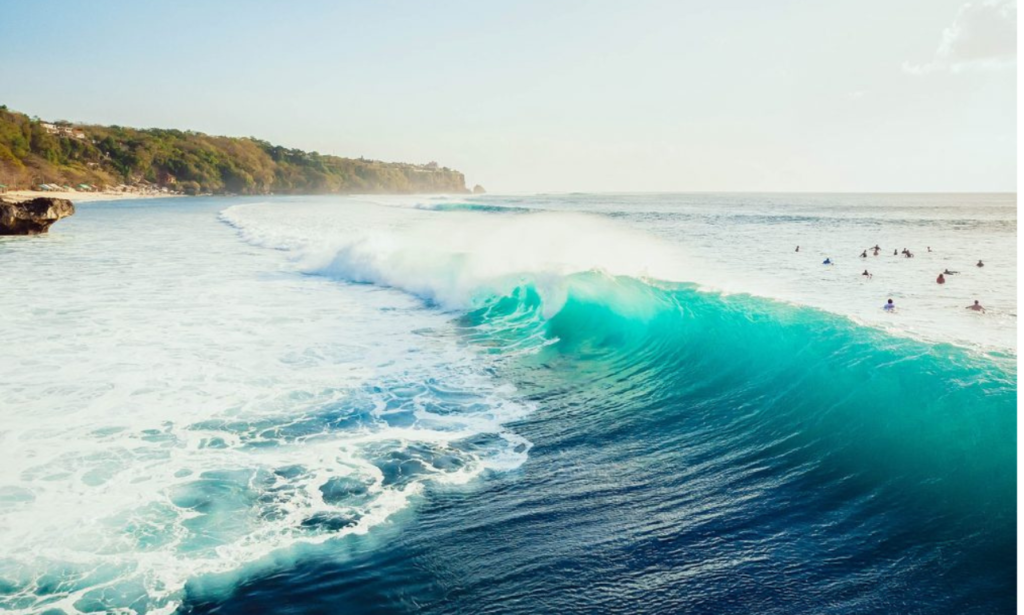
When paddle boarding in a large open area, it’s important to consider both the wind direction and speed:
- Onshore Winds: Winds pushing you toward the shore.
- Offshore Winds: Winds blowing you away from the shore.
- Sideshore Winds: Winds blowing parallel to the shore.
Strong offshore winds can be dangerous because they can push you away from the shore faster than you can paddle back. Onshore winds are safer since they push you back toward the shore. Choose a spot to paddleboard where the wind is onshore, or where the forecast predicts light winds so you can safely return.
7 Tips When Paddle Boarding in High Winds:
- Wind Direction: Always pay attention to the wind direction. Avoid paddleboarding if strong winds are blowing you away from the shore.
- Check the Forecast: Before heading out, check the wind forecast. I like using Windy.com, but you can also check the National Weather Service. If winds are expected to pick up, ensure you can return safely.
- Watch Your Surroundings: Stay alert to the conditions around you. If the wind starts to increase, head back to shore.
- Use a Leash: On windy days, always use a leash. Your paddleboard can get blown away faster than you can swim back. Don’t risk being stuck offshore without your board.
- Wear a PFD: Always wear a personal flotation device (PFD) in windy conditions. A PFD on your board doesn’t help much if you fall in. Wind and waves increase the chance of falling and make it harder to get back on your board.
- Bring a VHF Radio: If you’re paddling far from shore, carry a VHF radio to call for help if needed.
- Adjust Your Position: If the wind or waves become too strong, it’s okay to kneel or sit on your paddleboard. This will help you balance better and reduce wind resistance, making it easier to progress.
What are The Best Conditions for Paddle Boarding?
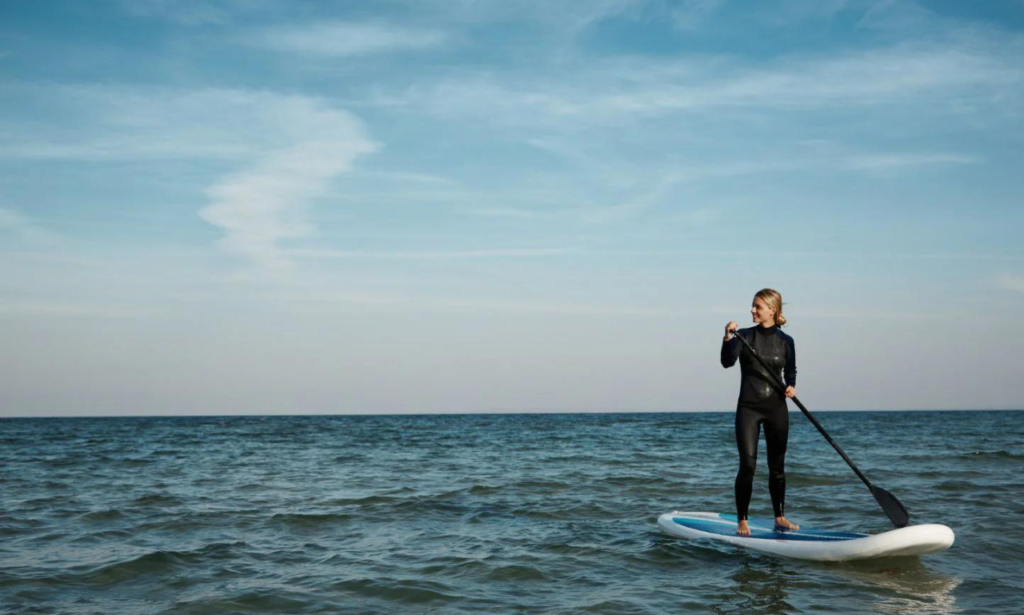
The ideal conditions for paddleboarding are calm waters with little to no wind. These conditions let you enjoy the beautiful scenery and paddle at your own pace without the worry of being pushed off course. For beginners, it’s especially important to steer clear of strong winds and choppy waters.
Such conditions can make it much harder to control your board and maintain balance, which can lead to a frustrating and potentially dangerous experience. Sticking to calm and mild weather will help you build confidence and skill in a safer and more enjoyable environment.
What Should You Do If You Encounter High Winds While Paddle Boarding?
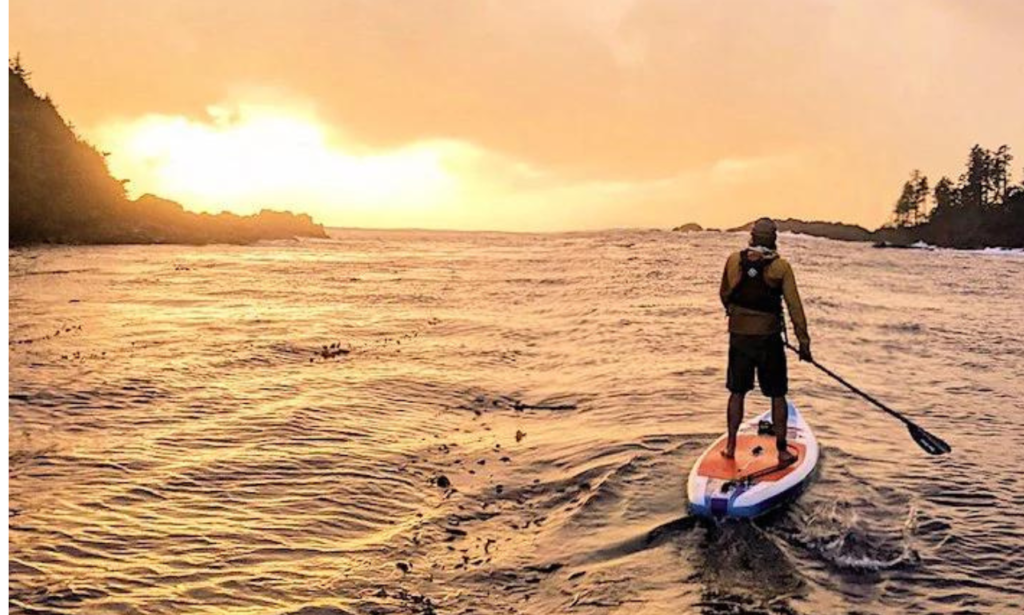
If you run into strong winds while paddleboarding, the safest option is to head back to shore. This will keep you safe and prevent you from getting blown off course.
If you’re struggling to paddle against the wind while standing, try kneeling on your board. This reduces wind resistance and makes it easier to move forward.
If you can’t return to your starting point, find another safe place to reach the shore. If heading directly back is too difficult, see if you can paddle across the wind to another nearby spot. It’s better to end up in a different location than to risk being blown out to sea.
How Can You Stay Safe While Paddle Boarding in High Winds?
Pay close attention to the wind direction when you start your paddleboarding session. Ensure that you can safely paddle back to your starting point. If this isn’t possible, plan an alternate landing spot where you can safely come ashore and get off your board.
Avoid paddleboarding if the winds are blowing offshore, as this could push you into open water where you might struggle to paddle back against the wind. Always choose a location where the wind conditions allow you to return safely.
What are The Best Sources for Wind Forecasts?
Before heading out for a paddleboarding session, it’s crucial to check the wind forecast. Several reliable sources can help you with this:
- National Weather Service: This is a great starting point, offering up-to-date information on weather conditions nationwide.
- Local News and Weather Websites: These provide detailed and localized weather information specific to your area.
- Paddleboarding Apps: Many apps offer wind forecasts and can be very useful for planning your trip.
Marine forecasts are also valuable as they provide details on wind speeds and wave heights, covering most coastal areas, including the Great Lakes.
My top recommendation for checking current wind conditions and forecasts is Windy.com. This site features a live map displaying wind speeds and directions. You can also click on weather stations for future wind forecasts. It’s particularly useful for visualizing wind patterns over your paddling route, helping you determine if the conditions are safe. If you’re planning a downwind journey, Windy.com can show you how the wind flows along your entire route.
How Do You Paddle Board Against The Wind?
Paddling against the wind can be challenging, but there are ways to make it easier. Start by ensuring you have a firm grip on your paddle. If your grip is too loose, you’ll end up struggling more with the wind instead of effectively making progress through it.
Next, leverage your body weight to help you move forward. Lean into the wind and engage your core muscles to provide more power with each stroke.
Lastly, keep your gaze fixed on the horizon and stay focused on your destination. Battling strong headwinds can be discouraging, but by maintaining your focus on your goal, you’ll stay motivated and eventually reach calmer waters.
How do You Paddle Board With Choppy Water?
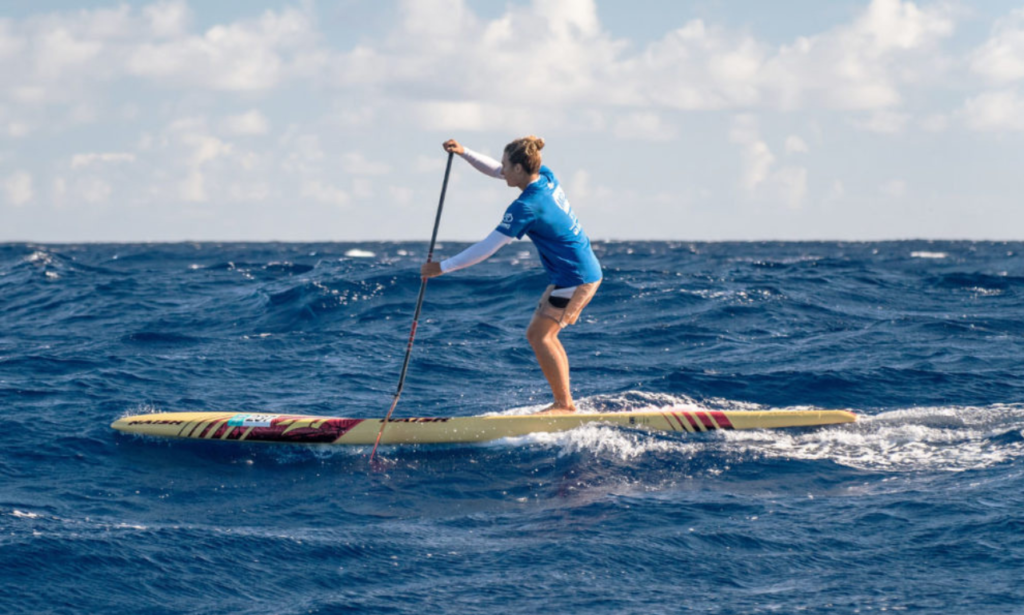
Paddleboarding in choppy water can be quite a challenge, but with a few key tips, you can handle it more effectively.
- Keep Your Paddle Close: When paddling into choppy water on windy days, keep your paddle close to the board. This helps maintain balance and stability.
- Short and Controlled Strokes: Use short, controlled strokes. Long strokes can lead to instability and make it harder to stay balanced.
- Stay Aware of Your Surroundings: Always be alert to other boats and obstacles in the water that could disrupt your balance.
- Have Fun: Remember, paddleboarding is meant to be enjoyable. Don’t let the choppy conditions take away from the fun. Embrace the challenge and enjoy the ride!
Conclusion
Knowing how much wind is too much for paddle boarding is essential for a safe and enjoyable experience. Generally, winds over 10-15 miles per hour can make paddling difficult and even dangerous.
It’s important to listen to your body and pay attention to the weather conditions before heading out. Always check local forecasts and choose calmer days for your adventure on the water. So next time you plan a paddling trip, be mindful of the wind and stay safe while enjoying nature!
FAQ’S
What wind speed is considered too much for paddle boarding?
Generally, winds over 10-15 mph can make paddle boarding challenging and potentially unsafe for most paddlers, especially beginners.
Can I paddle board in windy conditions if I’m experienced?
While experienced paddlers may handle stronger winds better, it’s still essential to assess safety factors like water conditions and fatigue before heading out.
Is it safer to paddle board in gusty winds or steady winds?
Steady winds are generally safer than gusty ones, as gusts can lead to sudden changes in water conditions and balance challenges.
Should I check weather forecasts before going paddle boarding in windy conditions?
Absolutely! Always check local weather forecasts for wind speeds and potential changes throughout your outing to ensure a safe experience.

